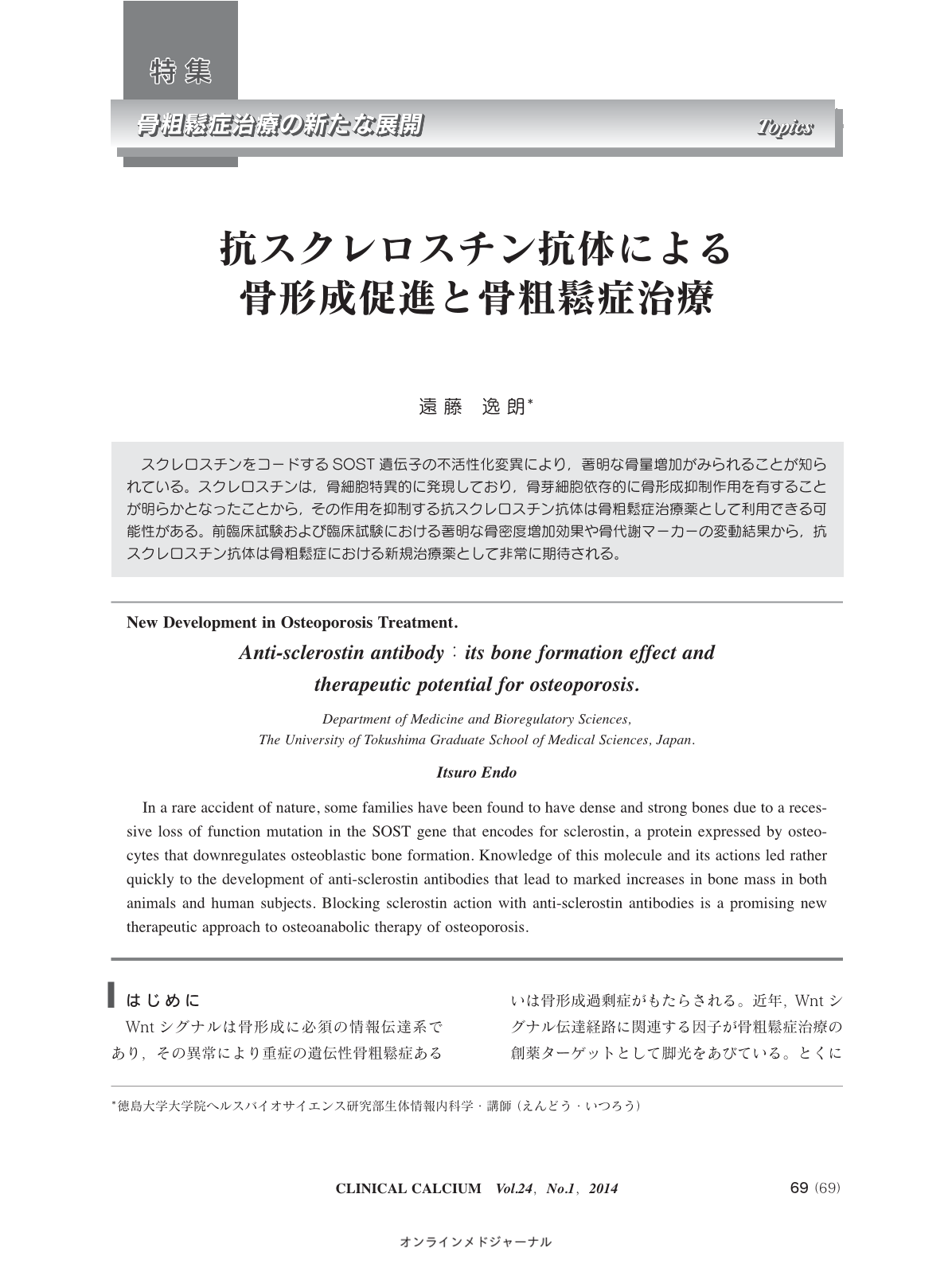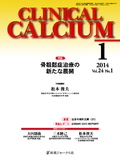Japanese
English
- 有料閲覧
- Abstract 文献概要
- 1ページ目 Look Inside
- 参考文献 Reference
スクレロスチンをコードするSOST遺伝子の不活性化変異により,著明な骨量増加がみられることが知られている。スクレロスチンは,骨細胞特異的に発現しており,骨芽細胞依存的に骨形成抑制作用を有することが明らかとなったことから,その作用を抑制する抗スクレロスチン抗体は骨粗鬆症治療薬として利用できる可能性がある。前臨床試験および臨床試験における著明な骨密度増加効果や骨代謝マーカーの変動結果から,抗スクレロスチン抗体は骨粗鬆症における新規治療薬として非常に期待される。
In a rare accident of nature, some families have been found to have dense and strong bones due to a recessive loss of function mutation in the SOST gene that encodes for sclerostin, a protein expressed by osteocytes that downregulates osteoblastic bone formation. Knowledge of this molecule and its actions led rather quickly to the development of anti-sclerostin antibodies that lead to marked increases in bone mass in both animals and human subjects. Blocking sclerostin action with anti-sclerostin antibodies is a promising new therapeutic approach to osteoanabolic therapy of osteoporosis.



